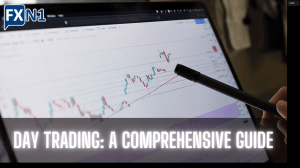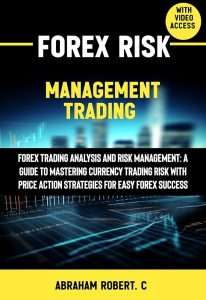A Beginner’s Guide to Forex Trading
Unlock the secrets of Forex trading! This comprehensive guide simplifies the complexities, offering a structured path to confident and informed trading decisions. Learn the fundamentals and start your Forex journey today!
Forex trading, the global marketplace for exchanging currencies, can seem daunting at first․ The sheer volume of information available online can be overwhelming․ However, with a structured approach and a commitment to learning, you can successfully navigate this exciting and potentially lucrative world․ This guide will provide a step-by-step process, demystifying the complexities and empowering you to make informed decisions․ Understanding the fundamentals is key to your success in this dynamic market․
Understanding the Forex Market
The foreign exchange market, or Forex (FX), is a decentralized, global marketplace where currencies are traded․ Unlike stock exchanges with centralized locations, Forex operates 24 hours a day, five days a week, across various global financial centers․ This continuous trading environment presents both opportunities and challenges for traders․ The market’s liquidity is exceptionally high, meaning you can usually buy or sell currencies quickly without significantly impacting the price․
Major Currency Pairs
Forex trading primarily involves currency pairs, where one currency is traded against another․ Major pairs, such as EUR/USD (Euro/US Dollar) and USD/JPY (US Dollar/Japanese Yen), represent the most heavily traded pairings, offering tighter spreads (the difference between the bid and ask price) and greater liquidity․ Understanding the factors influencing these major pairs is crucial for successful trading strategies․
Understanding Leverage and Margin
One of the defining characteristics of Forex trading is the use of leverage․ Leverage allows you to control a larger position in the market than your initial capital would normally allow․ For example, a 1:100 leverage means you can control $100,000 with only $1,000 of your own money․ However, leverage is a double-edged sword; it magnifies both profits and losses․ Therefore, it’s crucial to understand and manage risk effectively when using leverage․ Margin is the amount of money you need to deposit to open and maintain a leveraged position․ Failing to maintain sufficient margin can lead to a margin call, where your broker demands additional funds or liquidates your position․
Getting Started: Essential Steps
Before diving into live trading, thorough preparation is paramount․ This involves education, choosing a broker, and developing a trading plan․
1․ Education and Learning
Investing time in learning the fundamentals of Forex trading is non-negotiable․ Numerous resources are available, including online courses, books, webinars, and educational materials provided by brokers․ Focus on understanding technical and fundamental analysis, risk management techniques, and various trading strategies․ Consider seeking mentorship from experienced traders to accelerate your learning curve․
2․ Choosing a Forex Broker
Selecting a reputable and regulated Forex broker is crucial․ Research different brokers, comparing their fees, trading platforms, customer support, and regulatory compliance․ Ensure the broker is regulated by a recognized financial authority to protect your funds and ensure fair trading practices․ Read reviews and testimonials from other traders before making your decision․
3․ Developing a Trading Plan
A well-defined trading plan is your roadmap to success․ This plan should outline your trading goals, risk tolerance, preferred trading strategies, and money management rules․ It should also include specific entry and exit points for trades, along with clear guidelines for managing losses and protecting profits․ Regularly review and adjust your trading plan as your experience and market conditions evolve․
Essential Forex Trading Concepts
Several key concepts underpin successful Forex trading․ Understanding these concepts is vital for making informed decisions and managing risk effectively․
Fundamental Analysis
Fundamental analysis involves assessing the economic and political factors that can influence currency values․ This includes analyzing economic indicators like inflation rates, interest rates, GDP growth, and government policies․ Understanding these factors can help you predict future currency movements and identify potential trading opportunities․ Staying updated on global news and economic events is crucial for fundamental analysis․
Technical Analysis
Technical analysis focuses on using historical price charts and technical indicators to identify trading patterns and predict future price movements․ This involves studying price trends, support and resistance levels, and various technical indicators like moving averages, RSI, and MACD․ Technical analysis complements fundamental analysis and provides a different perspective on market dynamics․
Risk Management
Effective risk management is crucial for long-term success in Forex trading․ This involves setting stop-loss orders to limit potential losses on individual trades and diversifying your portfolio to reduce overall risk․ Never risk more capital than you can afford to lose․ Employing position sizing techniques, which determine the appropriate amount to invest in each trade, is also a vital aspect of risk management․
Strategies and Techniques
Various strategies and techniques can be employed in Forex trading․ Each strategy has its own advantages and disadvantages, and choosing the right strategy depends on your trading style, risk tolerance, and market conditions․
Scalping
Scalping involves taking small profits from numerous trades over a short period․ Scalpers typically hold their positions for only a few seconds or minutes, focusing on capturing small price movements․ This strategy requires quick reflexes, a high degree of market awareness, and a low-latency trading platform․
Day Trading
Day trading involves opening and closing positions within the same trading day․ Day traders aim to capitalize on intraday price fluctuations, often using technical analysis to identify potential trading opportunities․ This strategy demands discipline, focus, and a thorough understanding of market dynamics․
Swing Trading
Swing trading involves holding positions for several days or weeks, capitalizing on larger price swings․ Swing traders often use a combination of fundamental and technical analysis to identify potential trading opportunities․ This strategy requires patience, discipline, and the ability to manage risk effectively over longer periods․
Position Trading
Position trading involves holding positions for extended periods, sometimes for months or even years․ Position traders focus on long-term trends and fundamental analysis, aiming to profit from significant price movements over time․ This strategy requires patience, a long-term perspective, and a strong understanding of macroeconomic factors․
Tools and Resources
Several tools and resources can enhance your Forex trading experience․ Utilizing these tools effectively can improve your trading decisions and risk management․
- Trading Platforms: Choose a user-friendly and reliable trading platform that offers the necessary tools and features for your trading style․
- Economic Calendars: Stay informed about upcoming economic news releases that can impact currency values․
- Charting Software: Utilize charting software to analyze price trends, identify patterns, and generate technical indicators․
- News Sources: Follow reputable news sources for updates on global events that could influence the Forex market․
Mastering Forex trading requires dedication, discipline, and continuous learning․ The market is dynamic and unpredictable, and even the most experienced traders experience losses․ However, by following a structured approach, managing risk effectively, and continuously learning and adapting, you can significantly increase your chances of success in this exciting and potentially lucrative field․
- Risk Management Software: Use software to help calculate appropriate position sizes and monitor your risk exposure․
- Backtesting Platforms: Test your trading strategies using historical data to evaluate their effectiveness․
- Forex Education Websites: Access numerous free and paid resources to expand your knowledge and skills․
- Trading Journals: Keep a detailed record of your trades to track your performance and identify areas for improvement․
Remember, Forex trading involves inherent risks․ It’s essential to start with a demo account to practice your skills and strategies without risking real capital․ Thorough research, continuous learning, and disciplined risk management are crucial for long-term success․ Consistent learning and adaptation are key to navigating the complexities of the Forex market․ Never rush into live trading before you feel fully prepared․ Building a solid foundation of knowledge and experience will significantly improve your chances of achieving your trading goals․ The journey to becoming a successful Forex trader is a marathon, not a sprint; embrace the learning process and celebrate your successes along the way․ With patience and perseverance, you can master the art of Forex trading and achieve your financial aspirations․ The market offers both significant opportunities and considerable challenges; it is vital to approach it with respect and a clear understanding of the risks involved․ Finally, remember that professional advice is always beneficial; consulting with a financial advisor can provide valuable guidance and support․







